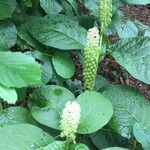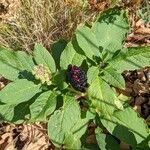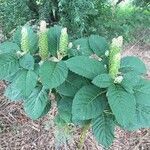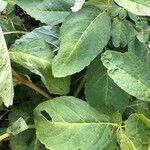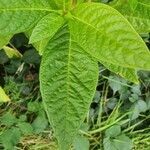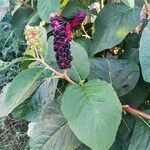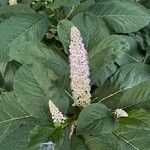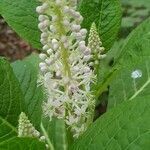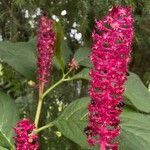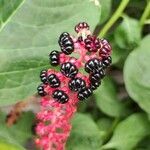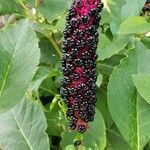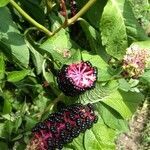Plants to 1.5(-3) m. Leaves: petiole 1-7 cm, sometimes obscure; blade elliptic, often broadly so, to lanceolate-elliptic, to 35 × 19 cm, base cuneate, apex acuminate. Racemes dense, erect at least in flower and young fruit, 5-30 cm; peduncle to 5 cm; pedicel 6-13 mm, sometimes obscure. Flowers: sepals 5, white or greenish white, elliptic to oblong, equal to subequal, 3-4 mm; stamens 7-10, in 1 whorl; carpels 7-8, distinct. Achenes black, 4 mm, smooth to somewhat rugose; pericarp firmly adherent to seed.
A herb. It is soft and juicy. It grows 1.5 m tall. The roots are thick and fleshy. The stems have grooves along them. They can be green or red-purple. The leaves have stalks. These are 1.5-3 cm long. The leaves are 12-26 cm long by 5-10 cm wide. They are oval and narrowed towards the leaf stalk. The flowers have stalks. The flowers are greenish. The fruit is a berry which is 7 mm across and purplish black when mature.
Of China and Japan, is reported to be established as a weed in Wis. It resembles P. americana in aspect, but has 8 stamens and 8 distinct carpels. The carpels ripen into distinct frs, each with a thin dry pericarp and a large black seed, the set of frs collectively no larger than a berry of P. americana; 2n=36. (P. esculenta)
